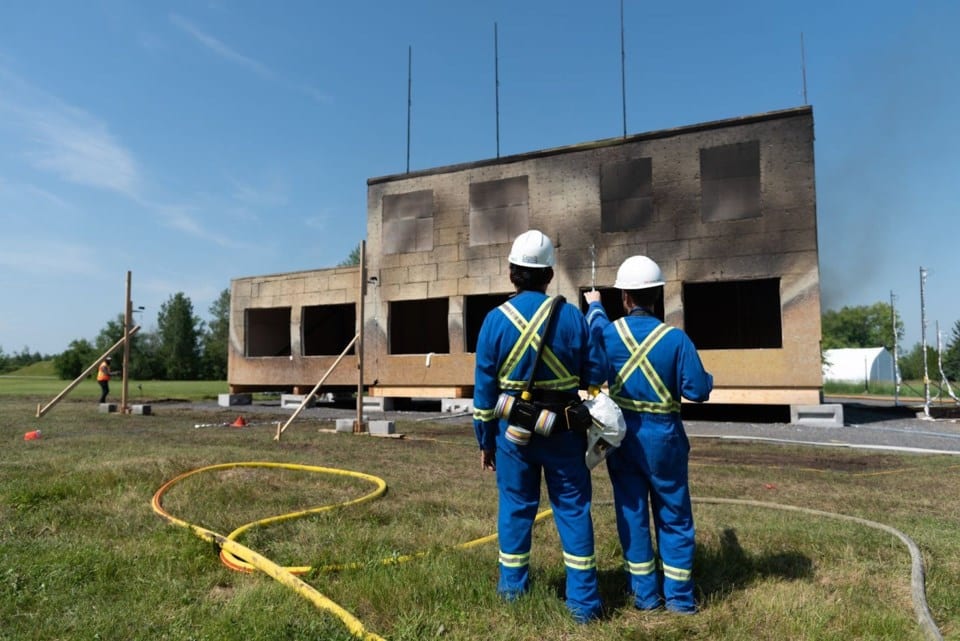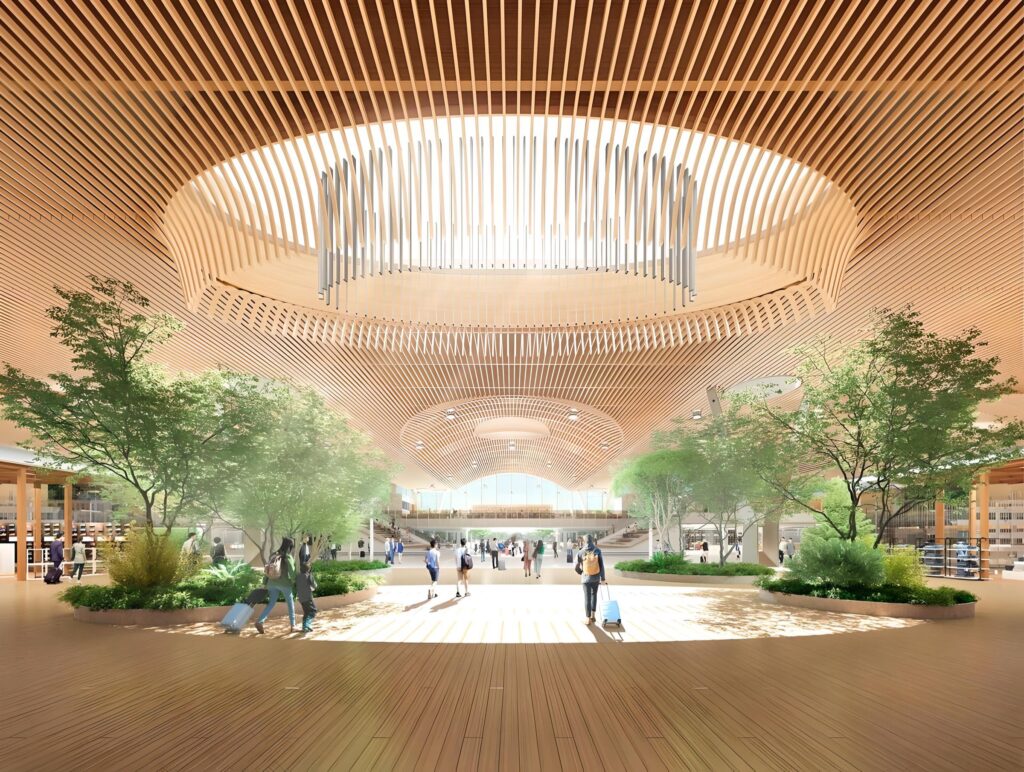Tall buildings made from wood are now mainstream, with CBS Saturday Morning co-cost Jeff Glor travelling to Portland, Oregan, home of the US mass timber movement – America’s new ground zero for the great green switch – where timber-based buildings are replacing steel, concrete, and glass-based buildings.
“Walking into Portland’s new airport is like seeing a version of the future, firmly rooted in the past,” Mr Glor said, adding that massive pieces of timber are now being bonded and pressed together, made into walls and floors, and installed all at once, Which, for one, can dramatically speed up construction.”
Speaking to Curtis Robinhold, the Port of Portland’s Executive Director, the man leading the $2B redevelopment of PDX, dubbed America’s Favourite Airport: “It’s pretty exciting, you are starting to see this come together,” Mr Robinhold said, who said the dream for the new airport, which uses 400 glulam beams in it’s 392,000 square-feet roof, is for “the airport to become a destination point for the Portland community.”
According to Chris Evans, President of Timberlab, who is responsible for manufacturing the roof, mass timber “is just a whole bunch of 2 x 6’s glued together,” adding that it is the future of construction.
And it’s not just in Oregan, “there are now more projects in the Northeast (in design phase) than there are here in the Pacific Northwest,” according to Mr Evans, who said, “you are starting to see the spread across the country.”
Indeed, “Mass timber is increasingly being used in museums, community centres, office buildings, and even a 25-storey condo in Milwaukee,’ Mr Glor said, with a growing amount of research into how mass timber products perform under seismic conditions and during intense fire.
“That’s the first reaction (that the timber building will burn down) that I had eight years ago when I was first introduced to it on an office building,” Mr Evans said, “once you understand what it is, and you don’t think of it just as wood.”
“And think of it as a highly sophisticated structural system with this natural fire-resistant quality; then you see that (wow), this really is a game-changer.”

According to Timberlab, treated mass timber can be as strong as steel and more fire resistant, and they have the testing to prove it. Never mind the aesthetic advantage:
“If we think about the workplace, nobody wants to go to work in a nine-foot acoustic tile ceiling with a bunch of cubicles,” Mr Evans said, adding that “there are movies based on that type of work environment.”
When done right, mass timber can be a long-term winner; however, it requires sustainable and responsible management practices.
“Using a system called track and trace,” Mr Robinhold said, “you can look up on the roof (of the new Portland Airport) and can identify where each of these pieces came from…which is quite astonishing.”
Following a ‘forest-to-frame’ philosophy, most timber used on the new airport has been sourced from SFI (mutually recognised by PEFC International) or FSC-certified, with timber coming from tribal nations and small family-owned woodlands.
“I think this is something that we are going to see in the future,” Mr Robinhood said, who added that timber-based construction is only marginally more expensive, “but really it’s worth it.”
The push to build with wood has seen Republicans and Democrats push policymakers to mandate timber in future public or government buildings.

Earlier this month, Wood Central revealed that US schools, libraries, colleges and military installations could soon be subject to the Mass Timber Federal Buildings Act, with the first version of the legislation read before Congress in mid-April.
Introduced by Senators Jeff Merkley (a Democrat) and James Risch (a Republican), the bill is the latest push to promote an industry expected to grow between 25 and 40-fold over the next 30 years. It will prioritise locally grown and manufactured timber over imports and comes amid a race to use mass timber and hybrid timber construction systems in public buildings worldwide.
In announcing the Bill, Senator Merkley said, “Mass timber is a key piece of the puzzle to solving our nation’s affordable housing crisis and tackling climate chaos.” Should it pass, the Act will mandate a preference in federal building contracts for mass timber products – creating a two-tier contracting preference – based on where the timber comes from – and a requirement to conduct building lifecycle assessments.
According to Mr Glor, “It is impressive to watch all this, and there are some huge environmental benefits potentially if it is done the right way.”
- To watch the full interview, visit the CBS YouTube channel. To read more about the PDX Airport redevelopment, visit Wood Central’s special feature.







